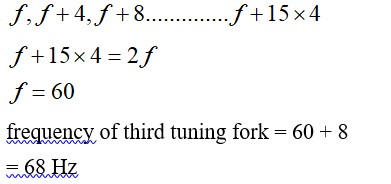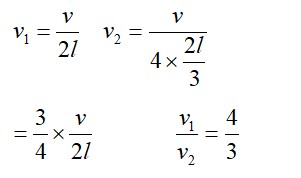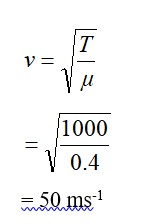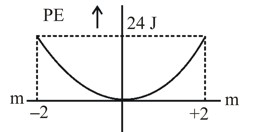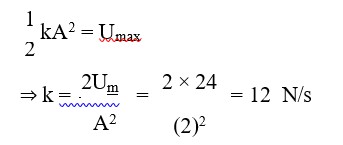15.13 Given below are some functions of x and t to represent the displacement (transverse or longitudinal) of an elastic wave. State which of these represent (i) a travelling wave, (ii) a stationary wave or (iii) none at all:
(a) Y = 2 cos (3x) sin (10t)
(b) Y = 2
(c) Y = 3 sin (5x – 0.5t) + 4 cos (5x – 0.5t)
(d) Y = cos x sin t + cos 2x sin 2t
15.13 Given below are some functions of x and t to represent the displacement (transverse or longitudinal) of an elastic wave. State which of these represent (i) a travelling wave, (ii) a stationary wave or (iii) none at all:
(a) Y = 2 cos (3x) sin (10t)
(b) Y = 2
(c) Y = 3 sin (5x – 0.5t) + 4 cos (5x – 0.5t)
(d) Y = cos x sin t + cos 2x sin 2t
-
1 Answer
-
(a) The given equation represents a stationary wave because the harmonic terms kx and appear separately in the equation.
(b) The given equation does not contain any harmonic term. Therefore, it does not represent either a travelling wave or a stationary wave.
(c) The given equation represents a travelling wave as the harmonic terms kx and are in the combination of kx – .
(d) The given equation represents a stationary wave because the harmonic terms kx and in the equation. This equation represents the superposition of two stationary waves.
Similar Questions for you
The acceleration of wave is g/2. Its speed increases as it moves up. So answer is (2)
Taking an Exam? Selecting a College?
Get authentic answers from experts, students and alumni that you won't find anywhere else
Sign Up on ShikshaOn Shiksha, get access to
- 66k Colleges
- 1.2k Exams
- 680k Reviews
- 1800k Answers

